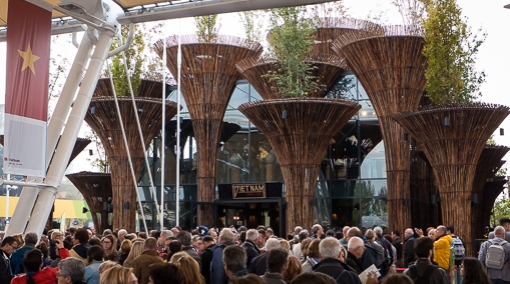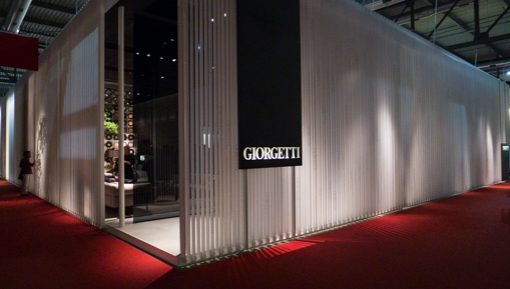Continuing our tour of the world’s bookstores, we found a Rizzoli inside the Galleria Vittorio Emmanuelle II in Milano. It is affiliated with the one in New York.

The Rizzoli Galleria are on three floors, it is not huge but carries quite a variety of Italian and international books.

According to the publicity material, the store guaranteed that true librarians are there to help customers, not mere store assistants.

It was temporarily closed and reopened in 2014, modernized.

The idea is to”re-launch physical brick and mortar bookstores, in order to highlight the beauty of discovering books and their contents, through a unique experience that could never be paralleled by an on-line store.” Bravo.

There are stations where one can browse today’s newspapers and current magazines electronically. Huh, even Abitare !

The store is flexibly designed to accommodate various types of events, notice the table on bicycle wheels above.
 Space for talks and book-signing.
Space for talks and book-signing.

The owners wish to have both stores, the one in Milan and the one in New York, to keep on being recognized as truly “iconic” places, to act as cultural agents and to act as catalysts to spread culture. While we were living in NYC, we certainly frequented the stores, especially the one on West Broadway, SoHo.

Travel books section.

The upper floor offers an interesting view of the Galleria and shoppers below.

On the day of our visit (in June 2016), it is the same day as the Champions League Final. There were chants by happy (and a little bit drunk) fans from Madrid on both sides. The two teams playing in the final were Atlético Madrid and Real Madrid, both Madrid teams.

We are glad in a sense that the gallery where Rizzoli is has not been turned into yet another haute couture boutique alley. There are plenty of fashion houses in Milano that are within a few minutes walk from here.

There is even a McD in here (not visible from the bookstore). Happy browsing.
Click on the link books under category to see other bookstores around the world.




















































































 .
.









































































































































































